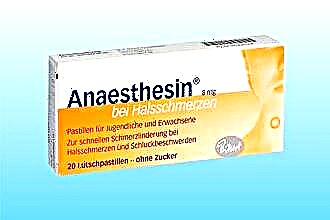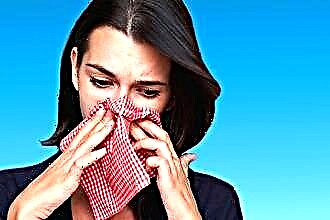A rash in the throat is an unpleasant phenomenon, often accompanied by pronounced painful sensations. The mucous membrane of the oral cavity, pharynx and tonsils is very sensitive to irritants even with preserved integrity, therefore, the presence of inflammation and elements of rashes on its surface often leads to restriction of the patient's food intake and even water. This is not only painful, but also dangerous: there is a high risk of dehydration and other adverse conditions. If the patient is worried about rashes in the throat and glands, resembling stomatitis, it is necessary to find out the cause of their appearance and draw up a therapy regimen. How to treat stomatitis and what methods can be applied in this case?
Causes and treatment
 The concept of "stomatitis in the throat" is not entirely correct, since stomatitis, according to generally accepted medical classifications, is called an inflammatory process in the oral cavity. However, when describing changes in the throat and tonsils, patients may mention signs characteristic of stomatitis - a blistering rash located in different parts of the mucous membrane. As a rule, this is "stomatitis of the pharynx and tonsils", which in reality becomes a manifestation of:
The concept of "stomatitis in the throat" is not entirely correct, since stomatitis, according to generally accepted medical classifications, is called an inflammatory process in the oral cavity. However, when describing changes in the throat and tonsils, patients may mention signs characteristic of stomatitis - a blistering rash located in different parts of the mucous membrane. As a rule, this is "stomatitis of the pharynx and tonsils", which in reality becomes a manifestation of:
- foot and mouth disease;
- chickenpox;
- enteroviral herpangina;
- a common form of herpetic stomatitis;
Depending on the cause, the therapy regimen is determined. Diseases are caused by viruses of different groups, and in some cases, treatment that acts directly on the pathogen is possible, it is called etiotropic. Etiotropic treatment includes antiviral drugs that are used systemically (tablets, injections), as well as topically (ointments, creams, solutions). This type of therapy is most preferable, since it allows you to achieve a quick improvement in the patient's condition, with the right approach, it reduces the risk of relapses (repeated episodes of the disease).
Stomatitis in the pharynx is often only a syndrome, so treatment is required for the underlying disease as well.
Rashes in the pharynx and tonsils can be combined with other changes outside the oropharynx. Therefore, therapy should be comprehensive, with an impact on the entire pathological process as a whole.
What to do if you are worried about stomatitis in the throat - should the treatment be only local? In fact, when the throat and tonsils are affected, drug and non-drug therapy is used. The first of these options, in turn, is divided into systemic and local therapy. Several methods are used simultaneously, the list of which depends not only on the type of pathogen, but also on the severity of the patient's condition.
General requirements
With lesions of the oropharynx and tonsils similar to stomatitis, only drug treatment is not enough, it is also necessary:
- Eliminate irritants (mechanical, thermal).
To this end, a diet is followed, the diet should not contain spicy, crumbling dishes, fish and meat with small bones, as well as food that is too cold or hot. You need to eat in small portions, preference is given to semi-liquid food. It is important to drink enough so that food debris does not stick to the mucous membrane.
- Treat the oral cavity.

Not only antiseptics and antiviral drugs are used, but also astringents, hygienic rinses to remove food debris. If the patient is experiencing severe pain, it is advisable to use anesthetics (pain relievers) - Lidocaine, Anestezin.
- Observe bed rest during fever, exclude contact with healthy people.
The only infection with symptoms of stomatitis that is not transmitted from person to person is foot and mouth disease. In all other cases, the patient can spread the pathogen even after the rash in the throat disappears.
The use of local anesthetics for stomatitis in the throat does not preclude the use of other general measures.
If the patient feels that the pain has become less pronounced, he may accidentally damage the mucous membrane. Therefore, anesthetics are used as an adjunct to improve the comfort of treatment. Diet and the rules of oral and pharyngeal hygiene must be followed.
Foot and mouth disease, chickenpox
For foot and mouth disease, attention is focused on local therapy, which includes antiviral agents in the form of ointments, lotions, solutions (oxolinic, tebrofen, interferon ointment, leukocyte interferon solution). They are applied to the mucous membrane and skin in the areas of the rash, the procedure is repeated 3 to 5 times a day.
From non-drug methods, ultraviolet irradiation, helium-neon laser are used. If the patient's condition is severe, complications develop, systemic therapy is required (vitamins, detoxification agents, antibacterial drugs).
Chickenpox treatment is usually carried out according to the scheme:
- treatment of the skin and cavity of the oropharynx with antiseptics (methylene blue, brilliant green, hydrogen peroxide, etc.);
- hygienic rinsing with special solutions (for example, based on sea water);
- rubbing the skin with water and vinegar to reduce the severity of itching.
Patients can be treated at home or in a hospital setting. Also shown are antihistamines (Clemastine, Loratadin), vasoconstrictor drops for nasal congestion (Xylometazoline). If a bacterial infection joins, antibiotics are needed (Ceftriaxone, Azithromycin). In severe cases, glucocorticosteroids (Prednisolone), a specific immunoglobulin, are used.
Enteroviral herpangina
Enterovirus herpangina, or coxacivirus tonsillitis, proceeds with an increase in body temperature, phenomena of general intoxication. Since there is no etiotropic therapy, the treatment is symptomatic:
- gargling;
- the use of antipyretics (antipyretic drugs);
- the use of antihistamines.
For gargling, you can use warm saline (0.9% sodium chloride solution), as well as various anti-inflammatory and antiseptic options (chamomile infusion, hydrogen peroxide solution). The rinse should be chosen by the doctor after examining the mouth, pharynx and tonsils.
If pharmacy medicines are used, preference is given to aerosols and fluids for irrigating the mucous membrane. Tablets and lozenges recommended for classic tonsillitis and pharyngitis are also helpful, but can mechanically irritate the rash area. If the patient uses lozenges with antiseptics and pain relievers, sharp edges may accidentally form during the resorption, which break the integrity of the blisters and cause pain.
Antipyretics are needed for those patients who have a significant increase in body temperature - up to 38.5 ° C or more. Used drugs such as Ibuprofen and Paracetamol - in age-specific dosages without exceeding the maximum permissible daily dose.
Stomatitis in the throat with enteroviral herpangina is usually not accompanied by complications, so symptomatic treatment is sufficient.
Severe disorders of the condition in this disease are rare, and patients are mainly concerned about sore throat, weakness and fever. If the throat is not examined, the infection can be mistaken for ARVI, since there are few differences in the clinical course. Antibacterial drugs are not needed, they are used only if there are direct indications - the addition of a bacterial infection.
Herpetic stomatitis
 Herpetic stomatitis is usually understood as affecting only the oral cavity, but under certain conditions (for example, concomitant or recently transferred ARVI), the rash also spreads to the mucous membrane of the pharynx and tonsils. Despite the localization of the lesion, the infection is considered as systemic, that is, it affects the entire body. Therefore, treatment should be comprehensive, including systemic (general) and local therapy.
Herpetic stomatitis is usually understood as affecting only the oral cavity, but under certain conditions (for example, concomitant or recently transferred ARVI), the rash also spreads to the mucous membrane of the pharynx and tonsils. Despite the localization of the lesion, the infection is considered as systemic, that is, it affects the entire body. Therefore, treatment should be comprehensive, including systemic (general) and local therapy.
As part of general treatment, use:
- Antiviral (Acyclovir, Zovirax, Famvir).
- Interferons (Viferon).
- Interferonogens (Cycloferon, Groprinosin).
- Immunostimulants (Imudon, Pentoxil).
- Hyposensitizing (Tavegil, Fenkarol).
- Antipyretics and anti-inflammatory drugs (Ibuprofen, Paracetamol).
The drugs are chosen depending on the severity of the condition, the age of the patient and the individual characteristics of the organism. The duration of antiviral therapy should be at least 5 days, while drugs can be administered in tablet or injectable form. Those funds that affect the immune mechanisms (interferons, interferonogens, immunostimulants) are also taken in courses, some of them (for example, Groprinosin) can be prescribed for 3 weeks.
Local therapy includes:
- antiviral ointments, drops, creams (Virolex, Herpetil);
- local anesthetics (anesthetic emulsion);
- antiseptics (Chlorhexidine, Orasept, Metrogyl, calendula tincture, Rotokan);
- enzyme preparations (Iruksol);
- astringents (strong tea infusion, sage herb infusion).
Local remedies for stomatitis in the throat are applied after hygienic treatment of the mucous membrane, refrain from food and drink for half an hour.
Medicines are applied to the affected area - for example, by rinsing. It is advisable to use creams and ointments for lips and gums. Course treatment is necessarily combined with systemic drugs and physiotherapy, which is carried out after a decrease in body temperature (UV irradiation, helium-neon laser).




